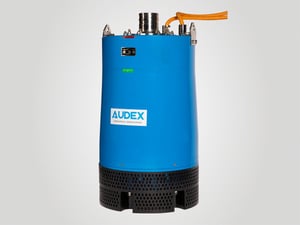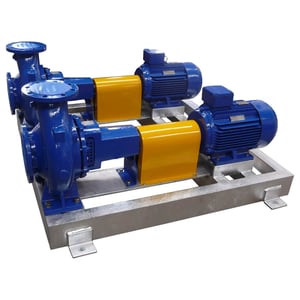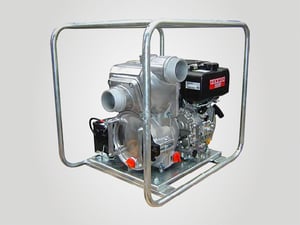Do you work on a mine site? If so, you understand how crucial dewatering pumps are to the continuous operation of your site. If an insufficient or inadequate pump is selected, you could be left with catastrophic downtime, or worse, loss of production.

In our latest blog, Global Pumps share their top picks for mine dewatering pumps…
 Submersible Pumps
Submersible Pumps
Submersible pumps can either be fully or partially submerged in water - as the motor is hermetically sealed and close-coupled to the body. This allows the pump to be underwater without the motor being compromised by fluids. Instead of pumping the water to the surface, as the pump is positioned in the water, it pushes the water to the surface via a discharge pipe by converting rotary energy into kinetic energy into pressure energy.
In dewatering applications, submersible pumps are designed to handle smaller abrasives, such as sand, small stones and clay. An open or closed impeller can be used, depending on the solids that are present in the fluid.
Open impeller consists of two parts that must be maintained as they will wear, causing a decrease in pump performance.
Closed impellers are commonly used in tough applications where materials completely pass through the impeller. Therefore, they are ideal for heavy duty work, where solid-laden fluid is being pumped.
Submersible pumps offer operators many advantages, including:
- less operating space as they are submerged in the water
- does not require priming
- as the pump is positioned in the water, no additional energy is required to move the water into the unit
- operate quietly
- less risk of cavitation as there is no spike in pressure when the water flows through the pump
Disadvantages of a submersible pumps include:
- seals can corrode over time, which can allow water to seep into the motor and make it unusable
- the sealing system makes it difficult to get access to the motor for repairs
 End suction pumps
End suction pumps
These pumps are one of the most common types of centrifugal pumps, and are available in a variety of sizes, materials and construction to suit multiple applications.
End suction pumps have a casing with the suction coming in one end and the discharge leaving out the top. They are positioned on the surface, with a long suction pipe needed to be lowered into the water.
An end suction pump offers the following advantages for dewatering applications:
- well-suited for transferring large volumes of low viscosity liquids
- simple design means end suction pumps do not require valves or pistons and their moving parts and minimal.
- compact pump design and only takes up a relatively small amount of space.
The following disadvantages apply to end suction pumps:
- small vacuum leak which prevents the pump from priming. This can cause the pump to continuously pull air from the leak instead of the air in the suction line, resulting in the priming cycle never been completed.
- priming time can be affected by the diameter and length of the suction hose or pipe due to the volume of air that needs to be removed. The longer it takes for the pump to prime, the more heat added to the liquid, which further extends priming time.
- need to be located close to the water source – limited suction capabilities
- once primed it will need to maintain adequate net positive suction head (NPSH) to remain operational without suction limitation. If the NPSH cannot be maintained, the pump may cavitate and lose prime.
 Trash Pumps
Trash Pumps
Trash pumps are usually portable and can handle solid-laden water - making them ideal for dewatering applications. They can also be run on diesel, petrol or electricity, depending on your site’s requirements.
Trash pumps are designed with deeper impeller veins and larger discharge openings, which allow them to move fluids containing solids that world normally clog a standard centrifugal pump. They can also do this at a higher speed.
Key advantages of trash pumps in dewatering applications include:
- adjustable speeds
- high discharge flow and pressure
- different power sources available
- easy to use and maintain as there are fewer components than other pumps
- bare-shaft - independent from designated power source
Disadvantages of trash pumps include:
- requires manual priming
- limited fuel capacity that demands more frequent monitoring and refueling
Making the right decision for your mine site
It is important the pump selected is fit-for-purpose and appropriate for a dewatering application. For example, dewatering pumps are designed to prevent the most common pump issues, which include clogging, stalling, centering, tipping and air blow-by.
Therefore, Global Pumps suggest discussing your application and the site’s dewatering requirements with a team of professionals to ensure best practice.
Global Pumps Dewatering Pumps
Global Pumps offers a wide variety of dewatering pumps for the arduous and tough nature of the mining and construction industries. Not limited to one brand, the team at Global Pumps are committed to providing your mine or construction site with the pump that’s right for the tough challenge.
Want to learn more? Or want to discuss your dewatering application with an expert? Get in touch with Global Pumps today.

